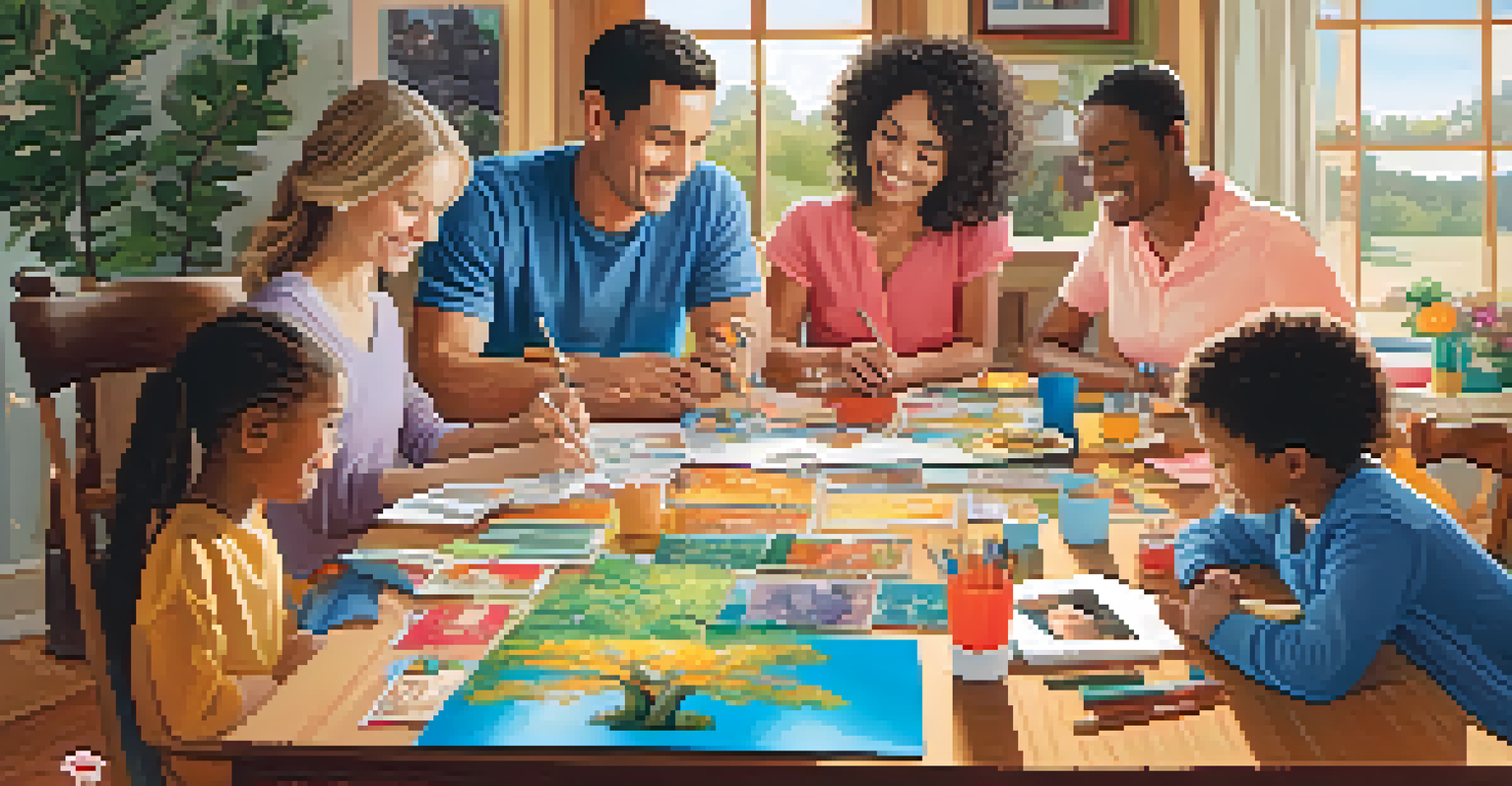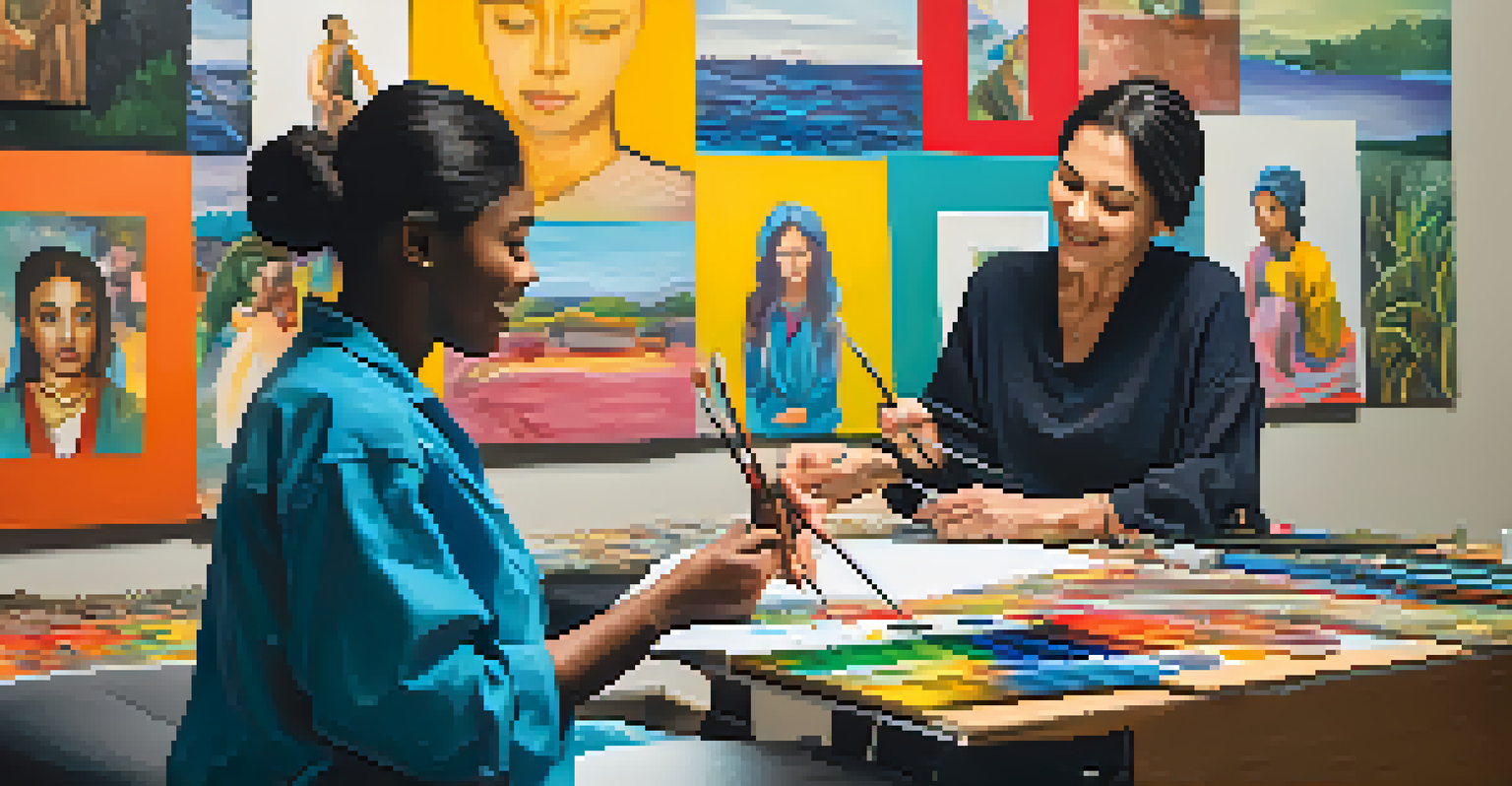The Role of Art in Enhancing End-of-Life Care

Understanding End-of-Life Care and Its Challenges
End-of-life care is a critical aspect of healthcare that focuses on the comfort and support of individuals nearing the end of their lives. It encompasses physical, emotional, and spiritual needs, often posing unique challenges for both patients and caregivers. Understanding these challenges can help foster a more compassionate approach to care.
Art enables us to find ourselves and lose ourselves at the same time.
Patients may experience a range of emotions, from fear and anxiety to acceptance and peace. Caregivers, on the other hand, often struggle with the weight of providing comfort while facing their own feelings of loss. This complex emotional landscape highlights the need for supportive interventions that can enhance the quality of care provided.
Art can serve as a powerful tool in this context, offering a means of expression and connection that transcends traditional medical approaches. By integrating artistic elements into end-of-life care, we can create a more holistic experience that addresses the diverse needs of patients and their families.
The Emotional Benefits of Art in Care Settings
Art has a unique ability to evoke emotions and create a sense of connection, making it particularly beneficial in end-of-life care. Activities like painting, music, or storytelling can provide patients with an outlet for their feelings, helping to alleviate anxiety and sadness. This emotional release can lead to a greater sense of peace and acceptance during a challenging time.

For instance, a patient who engages in art therapy may find that expressing their thoughts through painting allows them to process their experiences and emotions more freely. This creative expression can foster a sense of autonomy, giving patients a voice in their care that they may feel they have lost.
Art Enhances Emotional Well-Being
Integrating art into end-of-life care provides patients with a powerful outlet for expression, helping to alleviate anxiety and foster acceptance.
Moreover, shared artistic experiences can strengthen bonds between patients, families, and caregivers, creating a supportive community. This connection is vital as it reinforces the idea that no one is alone in their journey, ultimately enhancing the overall experience of end-of-life care.
Art as a Tool for Communication
Communication can become increasingly difficult for patients nearing the end of life, especially if they are experiencing pain or cognitive decline. Art offers an alternative means of communication, allowing patients to express their thoughts and feelings without the need for words. This can be particularly helpful for those who find verbal communication challenging.
The purpose of art is not a rarified, intellectual distillate; it is life, intensified, and widened.
For example, a patient may use visual art to convey feelings of fear or sadness that they struggle to articulate. Caregivers can then use these insights to better understand the patient's needs and provide more personalized support. This non-verbal communication can bridge gaps and enhance the care experience.
Additionally, art can facilitate important conversations about end-of-life wishes and preferences. By engaging in creative activities, patients may feel more comfortable discussing their desires with family members and caregivers, leading to more meaningful and respectful care planning.
Creating a Peaceful Environment with Art
The environment in which end-of-life care takes place significantly influences a patient's experience. Incorporating art into this space can create a more calming and inviting atmosphere. Whether it’s through murals, sculptures, or simply displaying patient artwork, these elements can transform a sterile setting into a warm, nurturing environment.
For instance, a healthcare facility that features calming murals depicting nature can help reduce patient anxiety. The presence of beautiful art can evoke positive memories and feelings, providing a sense of comfort during difficult moments. This approach emphasizes the importance of aesthetics in healthcare settings.
Art Facilitates Non-Verbal Communication
Art serves as an alternative means of communication, enabling patients to express their feelings and needs without relying on words.
Moreover, personalized art can have a profound impact on patients and their families. When patients see their own creations displayed, it can instill a sense of pride and accomplishment, reinforcing their identity during a time when they may feel vulnerable and diminished.
Art Therapy: A Structured Approach to Healing
Art therapy is a structured therapeutic approach that uses creative expression to foster healing and emotional well-being. In end-of-life care, certified art therapists can guide patients in exploring their feelings through various artistic mediums. This professional support can enhance the therapeutic benefits of art, making it a powerful tool for emotional processing.
For example, in a session with an art therapist, a patient might create a collage reflecting their life experiences, allowing them to confront and celebrate their journey. This process can lead to profound insights and a greater sense of closure, which is invaluable at the end of life.
Additionally, art therapy can help address unresolved issues or relationships, providing a safe space for exploration and expression. This can be particularly healing for patients who wish to convey messages to loved ones or come to terms with past experiences, ultimately contributing to a more peaceful transition.
The Role of Family Involvement in Artistic Activities
Involving family members in artistic activities can enhance the experience of end-of-life care, creating opportunities for connection and shared experiences. Engaging in art together can foster open dialogue and strengthen relationships during a time when feelings may be running high. This collaborative approach can be incredibly healing for everyone involved.
For instance, families may participate in a project where they create a family tree collage, sharing stories and memories as they work together. This not only honors the patient's life but also allows family members to express their emotions and support one another in a meaningful way.
Family Involvement Strengthens Bonds
Engaging families in artistic activities creates meaningful connections and shared memories, fostering a supportive environment during difficult times.
Moreover, these shared artistic experiences can provide families with cherished memories to hold onto after their loved one's passing. They serve as a tangible reminder of the love and connection shared during a crucial time, helping to cultivate a legacy that extends beyond the individual's life.
Conclusion: Embracing Art in End-of-Life Care
Integrating art into end-of-life care is not just about enhancing aesthetics; it’s about recognizing the profound impact that creativity can have on emotional well-being. Art provides a powerful means of expression, communication, and connection, addressing the multifaceted needs of patients and their families. As we embrace this approach, we can transform the end-of-life experience into one that is more compassionate and fulfilling.
The therapeutic benefits of art are evident in how they can ease anxiety, foster communication, and create lasting memories, making it an invaluable component of holistic care. By prioritizing artistic expression, healthcare providers can create environments that honor life while providing comfort during transition.

Ultimately, the role of art in enhancing end-of-life care is about celebrating the human spirit. It affirms the dignity of each individual by allowing them to express their unique stories, ensuring that their final journey is as meaningful and enriched as their life.